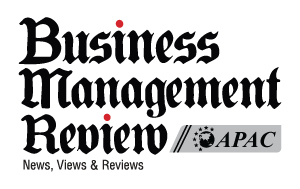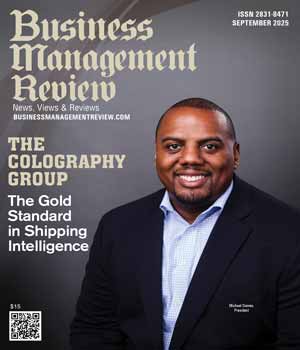I agree We use cookies on this website to enhance your user experience. By clicking any link on this page you are giving your consent for us to set cookies. More info
- Home
- Market Research
- The Colography Group
For more than forty years, The Colography Group has been the trusted source of logistics intelligence for companies that move goods at scale. Founded in 1983, just as U.S. deregulation halted federal freight reporting, the firm filled the data vacuum with an independent research model grounded in disciplined methodology. Cost, logistics and geography, the variables embedded in the company’s name, became the pillars it set out to measure with scientific precision.
At the core of The Colography Group’s methodology is the National Survey, launched in 1993 and recognized as the industry’s most comprehensive freight intelligence program. Each year, it interviews 30,000 to 50,000 shippers, selected through a proprietary model factoring in industry, company size, and shipping spend to collect data on shipment type, distance, weight and border activity. Its methodology is rigorously tested by a university advisory panel and supported by a team that includes Ph.D.s in data science and logistics and veteran industry professionals.
“We have to be defensible in what we do,” says Michael Dames, president. “Our clients base multi-million-dollar decisions on what we publish.”
Analysts transform raw shipping data on volume, distance, weight and service levels into actionable intelligence, such as route performance models, pricing benchmarks, tariff exposure maps and demand forecasts. By modeling bidirectional trade flows, they provide a unified view of outbound revenue and backhaul costs. Annual and quarterly pricing studies reveal where competitors are compressing margins or making room for premium offerings. This blend of historical insight, scientific rigor and strategic adaptability has earned The Colography Group a seat with the industry’s leading logistics players.
It serves various organizations, from global integrators and parcel carriers to tech platforms, government agencies and universities. Whether for policymaking, tariff strategy, academic research or capacity planning, each turns to The Colography Group for accurate, timely and defensible data.
“Our job is to strip the noise away and show a pattern, a number, a direction,” says Russell Reams, VP of marketing & client services. “That clarity lets clients price lanes faster, expand facilities with confidence and launch new services ahead of rivals.”
The Colography Group adapts its approach based on each client’s history and priorities. For multiyear relationships, it often needs only to fine-tune the existing feed, weekly lane files, daily dashboards or quarterly briefings, drawing on years of embedded knowledge of their logistics networks. Newer clients begin with a scoping conversation to align on timelines, budgets and the urgency of their information needs. Some assignments require quick-turn analysis, such as tariff lookups or M&A support. Others call for deeper, multi-phase studies that combine desk research, market sizing, focus groups and survey-based validation to shape product design, inform go-to-market strategy or assess the competitive position.
One recent engagement illustrates this end-to-end approach. A global client planning to launch a digital logistics service turned to the team to validate the market. The Colography Group began with desk research and expert interviews, then used the National Survey for market sizing. This was supplemented with focus groups and a custom survey to rank key features. The result was a clear, data-backed roadmap, from revenue models to launch timelines, that helped the client win board approval and secure funding.
“It was a project that proves why real data beats gut feel,” says Darren Lamb, VP of research & analytics.
The Colography Group’s evolution reflects how logistics has grown more complex and data-driven. The firm has reweighted its sampling to include e-commerce shippers and layered in new variables, macroeconomic signals, fuel indexes and machine-learning forecasts to deepen its insights. Its geographic scope is also expanding to track emerging trade routes and the evolving demands of global supply chains.
That ability to adapt is why logistics and supply chain leaders keep turning to The Colography Group. With insight that cuts through complexity, it helps them streamline networks, forecast demand shifts and act decisively in a high-stakes logistics arena.
At the core of The Colography Group’s methodology is the National Survey, launched in 1993 and recognized as the industry’s most comprehensive freight intelligence program. Each year, it interviews 30,000 to 50,000 shippers, selected through a proprietary model factoring in industry, company size, and shipping spend to collect data on shipment type, distance, weight and border activity. Its methodology is rigorously tested by a university advisory panel and supported by a team that includes Ph.D.s in data science and logistics and veteran industry professionals.
“We have to be defensible in what we do,” says Michael Dames, president. “Our clients base multi-million-dollar decisions on what we publish.”
Analysts transform raw shipping data on volume, distance, weight and service levels into actionable intelligence, such as route performance models, pricing benchmarks, tariff exposure maps and demand forecasts. By modeling bidirectional trade flows, they provide a unified view of outbound revenue and backhaul costs. Annual and quarterly pricing studies reveal where competitors are compressing margins or making room for premium offerings. This blend of historical insight, scientific rigor and strategic adaptability has earned The Colography Group a seat with the industry’s leading logistics players.
It serves various organizations, from global integrators and parcel carriers to tech platforms, government agencies and universities. Whether for policymaking, tariff strategy, academic research or capacity planning, each turns to The Colography Group for accurate, timely and defensible data.
“Our job is to strip the noise away and show a pattern, a number, a direction,” says Russell Reams, VP of marketing & client services. “That clarity lets clients price lanes faster, expand facilities with confidence and launch new services ahead of rivals.”
The Colography Group adapts its approach based on each client’s history and priorities. For multiyear relationships, it often needs only to fine-tune the existing feed, weekly lane files, daily dashboards or quarterly briefings, drawing on years of embedded knowledge of their logistics networks. Newer clients begin with a scoping conversation to align on timelines, budgets and the urgency of their information needs. Some assignments require quick-turn analysis, such as tariff lookups or M&A support. Others call for deeper, multi-phase studies that combine desk research, market sizing, focus groups and survey-based validation to shape product design, inform go-to-market strategy or assess the competitive position.
-
Our clients base multi-million dollar decisions on what we publish
One recent engagement illustrates this end-to-end approach. A global client planning to launch a digital logistics service turned to the team to validate the market. The Colography Group began with desk research and expert interviews, then used the National Survey for market sizing. This was supplemented with focus groups and a custom survey to rank key features. The result was a clear, data-backed roadmap, from revenue models to launch timelines, that helped the client win board approval and secure funding.
“It was a project that proves why real data beats gut feel,” says Darren Lamb, VP of research & analytics.
The Colography Group’s evolution reflects how logistics has grown more complex and data-driven. The firm has reweighted its sampling to include e-commerce shippers and layered in new variables, macroeconomic signals, fuel indexes and machine-learning forecasts to deepen its insights. Its geographic scope is also expanding to track emerging trade routes and the evolving demands of global supply chains.
That ability to adapt is why logistics and supply chain leaders keep turning to The Colography Group. With insight that cuts through complexity, it helps them streamline networks, forecast demand shifts and act decisively in a high-stakes logistics arena.
Company : The Colography Group
Headquarters :
. ManagementMichael Dames, President
Russell Reams, VP of Marketing & Client Services, Darren Lamb, VP of Research & Analytics
Thank you for Subscribing to Business Management Review Weekly Brief




